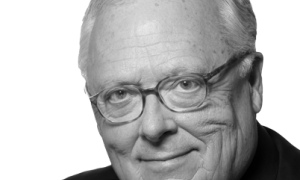It is perhaps fitting that the Cold War finally began to crack apart in a place called Iceland.
It was October 1986, and President Reagan flew to Reykjavik to meet Soviet Premier Mikhail Gorbachev. Our side didn’t expect much from the talks. They were intended to give the leaders a chance to get to know each other better and lay some groundwork for future talks, planned for Washington. That’s not what ended up happening, though.
Ken Adelman was there, as the president’s arms-control director. His new book, “Reagan at Reykjavik,” tells the story of a weekend that changed the world.
Mr. Gorbachev came to the summit prepared to bet big. He offered sweeping reductions in ballistic nuclear missiles and even agreed to work on human rights issues, which had always been hidden far behind the Iron Curtain. Before he would sign any agreements, though, he demanded that the United States stop its work on Reagan’s dream: the Strategic Defense Initiative (SDI) missile-defense system. Reagan wouldn’t budge.
After hours of talks between the two leaders, the summit ended, “with no joint statement, no date set for the summit in Washington, no telegenic smiles or perfunctory pleasantries,” Mr. Adelman writes.
Those who had been there immediately painted it as a failure. Secretary of State George Shultz expressed a “great sense of disappointment.” White House Chief of Staff Donald Regan told reporters, “there will not be another summit in the near future that I can see at this time.” Mr. Gorbachev sounded pessimistic. “If we had a third meeting in Washington that would have no results, I think that would be a scandal, unacceptable, impermissible,” he told reporters.
The media agreed. “Tonight, when the summit was over, a somber mood,” ABC’s Peter Jennings reported. “No banter, and no progress.” Or as The Washington Post put it, “The summit meeting between President Reagan and Soviet leader Mikhail Gorbachev collapsed tonight.” Reporter Lou Cannon pointed the finger at the president. The sides, he wrote, “deadlocked on the crucial issue of restricting the U.S. space-based missile-defense program widely known as ‘Star Wars.’”
However, all this was, as they say, the rough first draft of history. Far more had happened in Reykjavik than anyone knew at the time.
First, the summit was crucial simply because it put Reagan and Gorbachev face to face. “Each felt free to speak his mind,” Mr. Adelman writes, which allowed them to move forward. Back home, “both men felt that their own bureaucracies were blocking, not just their goals, but even an enunciation of their goals.” By meeting with no bureaucrats present, they made real progress.
The summit was also notable for what was happening on the floor above the direct talks. Mr. Adelman recalls “American and Soviet officials talking informally, asking each other about their families, sharing information and impressions, even laughing together.”
The Americans established relationships with “every leader who mattered under Gorbachev,” relationships that would continue long after the weekend ended. “In a small way, it helped end the Cold War by helping to thaw the cold ways we dealt with one another,” Mr. Adelman writes.
Finally, it was important because of what Reagan stood for. At Reykjavik, he fought for SDI because he thought it would help eliminate the threat of nuclear weapons. The limited systems we have today aren’t as comprehensive as they should be, but the fact they exist at all is a result of Reagan’s leadership, especially his stand in 1986.
A few days after the talks, The New York Times editorialized that “Reykjavik produced a roller coaster, first of hope, then disappointment, and now confusion.”
Over the 25 years since the meeting, the actual records and first-hand notes from both the American and the Soviet participants have been declassified and are now available. We now have a much better appreciation for what actually happened.
Mr. Adelman, a professional historian, tells the story for all to see, and we now know that these talks sped the end of the Cold War and the dissolution of the Soviet Empire.
Not bad at all for a rainy weekend in Reykjavik.
- Ed Feulner is founder of the Heritage Foundation.
Originally appeared in The Washington Times

